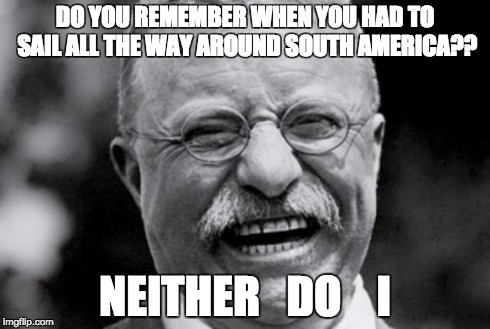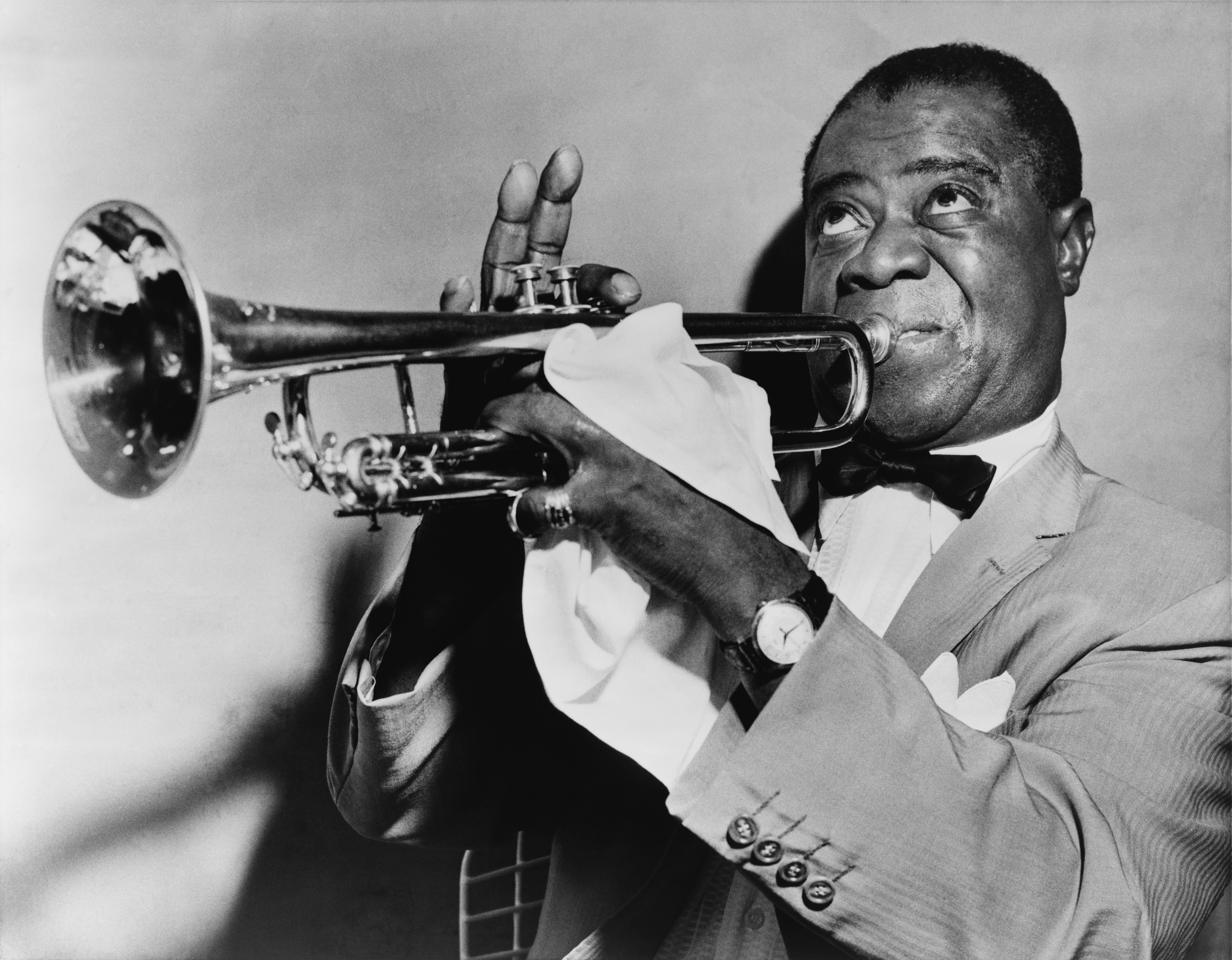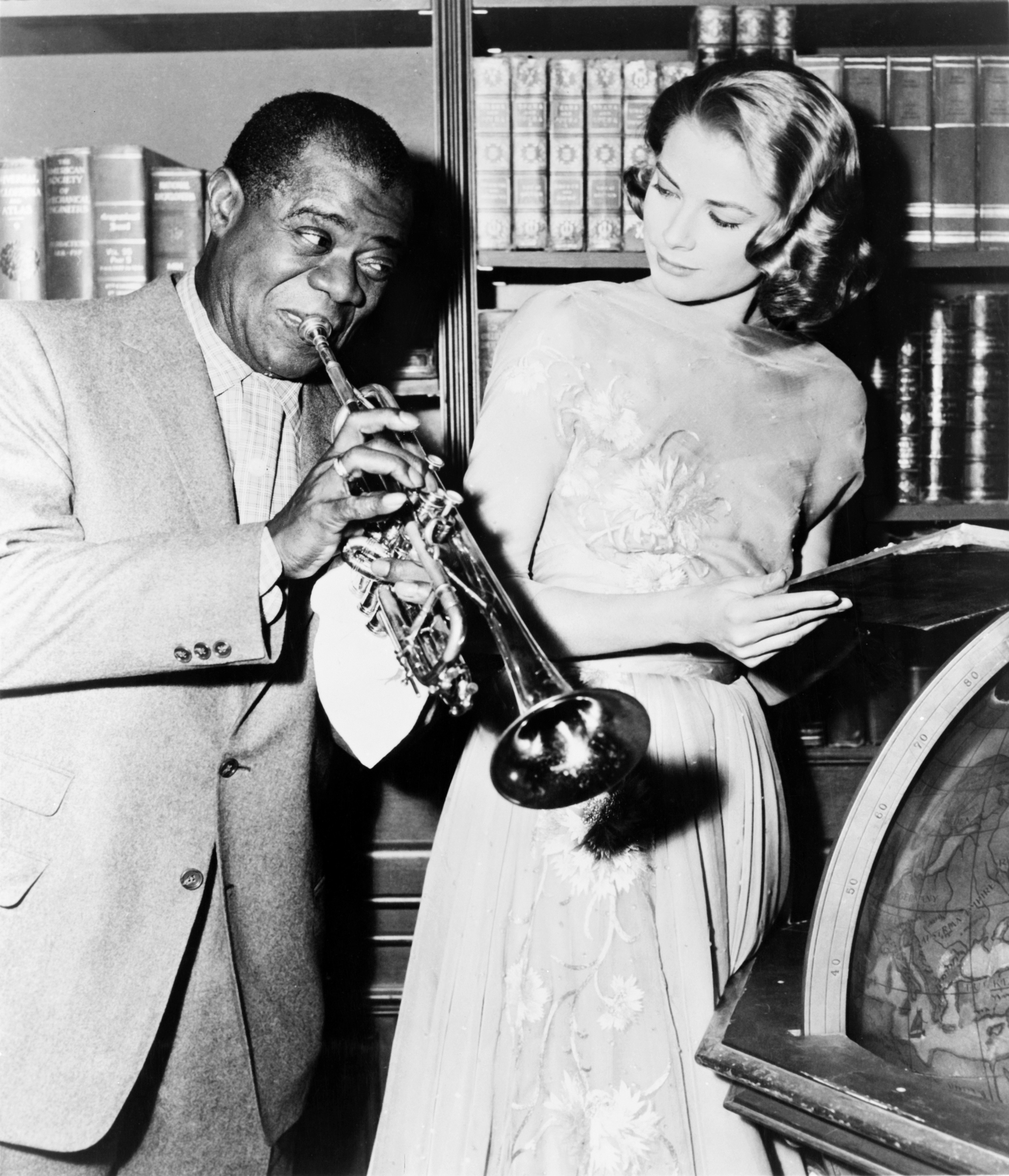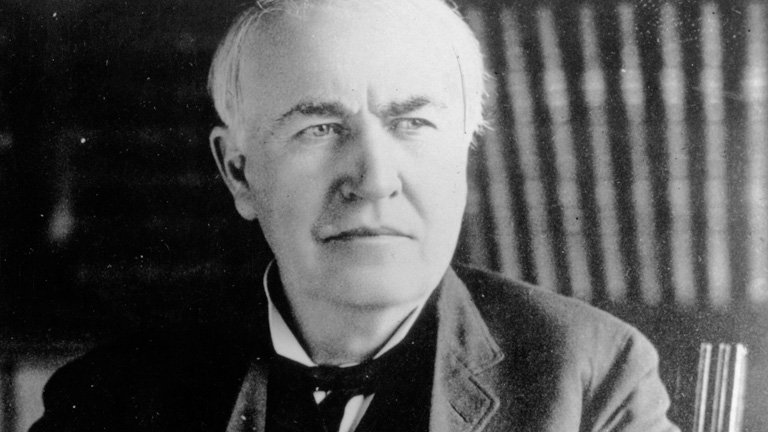Opressed Seamen
Teddy Roosevelt

BUT TEDDY SAVED IT!!!
A Vote for Roosevelt is a vote for a Beautiful America

He Carved Up 44 Monopolies and 48 miles of Panamanian Jungle
Tough on Big Business and Foreign Policy
After San Juan Hill...

Capitol Hill will be a breeze
ROOSEVELT!!!
Roosevelt set aside over 230 million acres of land, 150 national forests, 51 federal bird reservations, five national parks, and 18 national monuments for federal protection. He established the National Reclamation Act of 1902 which helped irrigate and farm the west. He created the Forest Service and appointed Gifford Pinchot as its head. He also created the Antiquities Act in 1906 which allowed for the creation of National Monuments.
Roosevelt was known as the original trustbuster because of his extensive use of the Sherman Antitrust Act to break large monopolies and corporations which gained unfair advantages.
Roosevelt passed consumer protection laws such the Federal Meat Inspection Act of 1906 and the Pure Food and Drug Act of 1906 which provided safety inspections and regulations for the food and drug industries and significantly improved sanitation and limited disease.
Roosevelt was the single American figure most responsible for the Panama Canal, revolutionizing commerce and shipping to this day. Thanks to Roosevelt, an isthmus of inhospitable, malarial jungle is the most important waterway in the Americas and possible the world.

Roosevelt earned the Nobel Peace Prize for his role in organizing the negotiations between Russia and Japan and ultimately helping end the Russo Japanese War.
Joseph McCarthy

In the late 1940s to early 1950s, communism at home and abroad was a frighteningly real concept to many Americans. These fears eventually came to define and erode the era's politics and society. For many, Republican Senator Joseph P. McCarthy of Wisconsin was an enduring symbol of this "Red Scare" that swept the nation. McCarthy spent 5 years in vain, trying to denounce and expose communists and other "left-wing" loyalty risks that were present in the U.S. Government. McCarthy was rarely spoken out against, for many people were far too intimidated by his accusations. It was not until he attacked the Army in 1954 that his actions earned him the censure of the U.S. Senate.
McCarthy was elected in 1946 to the Senate. 4 years later in February, McCarthy appeared at the Ohio County Women's Republican Club in West Virginia to give a speech that propelled him into infamy. McCarthy declared that he had a list of 205 known communists who were working in the State Department. Despite his promotion to the leader of the Committee on Government Operations, which allowed him to launch very expansive investigations of the alleged communist infiltrations, McCarthy aggressively interrogated witnesses in what was a blatant violation of their civil rights. Although McCarthy and the government had a lack of any proof of subversion, he unemployed more than 2,000 government employees as a result of this "McCarthyism."

"I will not get into the gutter with [McCarthy]." - President Dwight D. Eisenhower
In April of 1954, McCarthy turned his attention to exposing the communists of the armed services. Some Americans initially supported McCarthy; now, however, their support began to wane. First, the Army showed evidence that McCarthy had tried to win preferential treatment for his aides when they were drafted. This event undermined McCarthy's credibility. Next came the fatal blow: the decision to broadcast the Army-McCarthy hearings on national TV. McCarthy was shown intimidating witnesses and offering evasive responses when question. McCarthy attacked a young army lawyer, at which the Army's chief counsel thundered, "Have you no sense of decency, sir?" By the time the hearings were finished and done with, McCarthy lost most, if not all, of his allies and support. The Senate condemned him for his "inexcusable, reprehensible, vulgar, and insulting conduct unbecoming a senator." McCarthy kept his job but lost his power, dying in 1957 at the age of 48.
Louis Armstrong

Louis Armstrong was born on August 4, 1901, in New Orleans, Louisiana, into an extremely poor childhood in an area known as “The Battlefield.” His father was a factory worker who abandoned his family soon after Armstrong’s birth and his mother often turned to prostitution, leaving him with only his grandmother. One New Years, after being arrested for shooting a celebratory shot, Louis was sent to Colored Waif’s Home for Boys where he was introduced to the cornet and began dreaming of a life focused around making music.
Growing quickly, Armstrong became well known as a skilled musician by working his way up to fame through small gigs like in local “honky tonks.” After gaining considerable popularity, Armstrong decided to join the top African American dance band in NYC, where he faced the northern mentality of other musicians, who oftentimes gave Armstrong a hard time over his wardrobe and the way he talked. Disliking such atmosphere, Armstrong left the dance band in 1928 to create his own groups, where he made the leap from cornet to trumpet. By 1932, Armstrong had begun appearing in movies and made his first tour of England. Facing opposition from critics who believed his music to be too wild, Armstrong refused to let them end his career, and proceeded to begin a longer tour in Europe in 1933.

In his lifetime, Armstrong achieved a remarkable number of accomplishments by changing views towards African Americans. In 1936, he was the first African American jazz musician to write an autobiography and was also the first to be featured in a major Hollywood movie. Additionally, he was the first African American to host a nationally sponsored Radio Show and often broke box office records during the 1930-40s or the “Swing Era.” Some of his greatest recording include “Swing That Music” and “Jubilee.”
In the 1950s, Armstrong toured all over the world earning the name “Ambassador Satch” and inspiring a documentary on CBS called Satchmo the Great. Armstrong often refused to speak out about civil rights, but in 1957 when he saw the Little Rock Central High School integration crisis in Arkansas, he called Eisenhower a coward for treating African Americans so poorly. His words became wildfire all over the world, yet he received criticism from both black and white public figures and no african american musicians took his side. This is seen today as one of the bravest moments in Armstrong’s life. In 1967 Armstrong wrote the song “What a Wonderful World,” both singing in his gravelly voice and smoothly on the trumpet. This song is what many of us know today as a highlight in the Toy Story movies that so many love all over the world.
Louis Armstrong epitomizes the American Dream. From having to hustle his way to become a musician, to his struggle against the racism all African Americans faced in his lifetime, Armstrong achieved success to a legendary degree. He broke barriers in the music world and influenced the lives of all Americans, black or white.
Thomas Edison

The world is increasingly reliant on technology. Edison’s breakthroughs in technology and science have undoubtedly shaped America into the leading nation it is today. When Edison was a boy, he worked for a railway company and saved a boy’s life. When the boy’s father thanked him by teaching him Morse code and telegraph operating, Edison was immersed into the world of science. He employed many workers in his industrial research center, which was the first of its kind in the world, promoting a more efficient scientific front. Throughout his lifetime, he ensured over 400 patents, continuously finding ways to improve technology such as the new carbon microphone which enabled telephone conversations to be audible enough. His carbon microphone technology was so effective that it has been used in telephones until the 1980s.
Edison is commonly acknowledged for inventing the phonograph, which recorded sounds onto wax cylinders. The ability to record sound made musical entertainment accessible to a wider range of people and immortalized the words of those before us. Edison also created some of the first motion picture technologies to project films. His inventions contributed to the booming film industry which continues to accumulate billions of dollars of revenue in America.
However, Edison’s most impactful contribution to American society is his transformation of electricity into a safe, practical utility. He invented the parallel circuit, safety fuses and insulators, electrical sockets and switches, voltage stabilizers, and a network to distribute the electricity. His electricity generation plant in New York City was also the first in the world. Electricity became a reality for many people around America.
Science has come a long way since Edison’s time, but Edison was the true American pioneer for technological advancement and lives on in today’s society that relies so heavily on industrialism.
Madison/Jefferson
James “Father of the Constitution” Madison was both the fourth president of the United States and a writer of the first drafts of the Constitution of the United States. Madison also participated in the Continental Congress and took a leadership role in the Virginia Assembly and Constitutional Convention. In addition, he co-wrote the Federalist Papers, which were famous in their promoting of the then new Constitution. He also helped frame the Bill of Rights. as well the Virginia Constitution. Furthermore, Madison helped Jefferson found the Democrat-Republican party, which still exists today as the Democratic Party.

Later, as president of the United States of America, Madison would stand up for America and declare war on Britain in 1812 because of their impressment of American seamen and seizure of American cargo. He helped prove the United States’ worth as a new nation by not being defeated by the British.
Benjamin Franklin was often called the “First American.” This nickname was not without merit. Franklin came from a modest background but became a prominent printer in Philadelphia who had primarily self-educated himself. One of his most famous works was the “Poor Richard’s Almanac,” which contained witty sayings and wise proverbs. In his middle aged life, Franklin was a sort of inventor and scientist. He experimented with electricity and many other subjects, as well as inventing the Franklin stove, which was a more efficient stove. In addition Franklin served as postmaster for both the colonies and the United States. During his time, he improved postal service.

Franklin worked towards colonial unity. He helped draft the Declaration of Independence and later helped draft the Treaty of Paris in 1783, which ended the Revolutionary War. Franklin was also the ambassador to France and helped negotiate much of the help that the French gave to the Americans during the Revolution.
Rosa Parks

Rosa Parks is known for standing up for herself and her beliefs during the civil rights movement. She was born on February 4, 1913 in Tuskegee, Alabama. Due to her mother’s job, she had to move to Montgomery, Alabama and attended a school for blacks. In her early years, she had experiences involving white kids who would tease her or call her names, and although she wanted to do something about it (one day she finally threw a rock at the kid) Rosa’s grandmother told her she couldn’t do anything because they’d get in trouble.
On December 1, 1955, Parks refused to give up her seat on the bus, leading to the Montgomery bus boycott. It was her second encounter with the bus driver who demanded her to re enter through the backdoor of the full bus twelve years ago. She refused and left. This time, Rosa sat in the first row of the “colored” section on the bus. As the bus filled, white people were left standing and the bus driver told Rosa to give up her seat. Rosa Parks was soon arrested by local police.

Rosa Parks is known as the “mother of the civil rights movement”. Rosa Parks is the woman whose actions led to the outlawing of segregation on city buses. Parks was part of many organizations, the main one being the NAACP. She won countless awards; one was the Medal of Freedom Award from Bill Clinton. With the impact of Rosa Parks and the many other civil rights leaders, colored people were finally able to enjoy the same freedoms as white people.

Eleanor Roosevelt was much more than just a shadow of her tall and handsome husband and yes, cousin, Franklin Roosevelt’s fame and success. Born in New York City on October 11, 1884 , Eleanor Roosevelt, nicknamed “Little Nellie” was raised into a troubled family with an alcoholic mother. Eleanor learned very early on in life to work hard and have compassion for others. As Teddy Roosevelt’s niece, Eleanor was introduced to the world of politics at a young age but kept herself distant from it all.
As first lady she pulled up her sleeves and got down to the business of human rights. With the Universal Declaration of Human Rights, Eleanor often times stole the spotlight with her lopsided smile and individualistic personality. In addition to the world renowned Declaration, Eleanor was a prominent member of the United Nations. Once Franklin contracted Polio and became paralyzed, Eleanor served as his limbs. She stepped into the public eye and began to lead organizations such as the League of Women’s Voting and the prestigious National Consumers’ League where she helped her husband gain a prestigious political status. By giving frequent radio broadcasts and sympathizing with working women, African Americans, youth, and tenant farmers during the Great Depression, Eleanor became one of the most praised First Ladies in American history. Eleanor wholeheartedly supported all of Franklin’s actions but shined brighter than any other First Lady America had ever seen. Therefore, incest obviously didn’t mess with the likes of Eleanor Roosevelt.
Following her husband's eventful presidency, Eleanor continued her activism and wrote several books amongst them were "This Is My Story" (1937), "This I Remember" (1949), "On My Own" (1958) and "Autobiography" (1961). Eleanor died of cancer on November 7, 1962, at the age of 78.leaving behind a legacy of greatness, this outstanding and outspoken First Lady is till this day remembered for her incredible humanitarian efforts and the social change she brought about for many Americans.

INSERT TEXT HERE

He was one of the most modern and most influential American authors. Hemingway wrote with a short and sparse style and created the Iceberg Effect which allowed the true feelings and emotions to be implied rather than explicit. Hemingway also wrote about subjects he had personal experience with. He was an ambulance driver in WWI on the Italian Front and after rescuing an injured soldier from mortar fire, he himself was commissioned as an officer. He would go back to the front and continue to fight.
He lived in Paris and was friends with the most famous expatriates and helped create the 1920’s literary scene, where writers like Gertrude Stein, TS Eliot, Ezra Pound and F Scott Fitzgerald thrived.
Hemingway was an avid sportsmen and lived in Cuba and Key West for many years pursuing big game fishing. He held the world record for largest Marlin for a significant period of time. He also enjoyed hunting and went on multiple Safaris to Africa. During his second trip he survived two consecutive plane crashes and spent the night in the jungle. Not only did he survive despite severe injuries, he helped save the other passengers with him.
Hemingway was also a reporter and was present at the D-Day assault during WWII and linked up with a US Army Unit following it all the way to Germany. He was one of the first men in a liberated Paris, and when many of the unit’s officers were killed in a battle, Hemingway took over leadership and unofficially directed the unit in combat. Later in life, Hemingway would retire to Sun Valley, Idaho and receive the Nobel Prize in Literature.
"Anna Eleanor Roosevelt." The White House. The White House, n.d. Web. 02 June 2015.
"Benjamin Franklin." Bio. A&E Television Networks, 2015. Web. 01 June 2015.
"Benjamin Franklin." History.com. A&E Television Networks, n.d. Web. 01 June 2015.
Crouch, Stanley. "Louis Armstrong | The 20 Most Influential Americans of All Time | TIME.com." NewsFeed The 20 Most Influential Americans of All Time Comments. Time Magazine, 24 July 2012. Web. 02 June 2015.
"Eleanor Roosevelt Biography." Bio.com. A&E Networks Television, Feb. 2015. Web. 02 June 2015.
"First Lady Biography: Eleanor Roosevelt." Eleanor Roosevelt Biography. The National First Ladies' Library, n.d. Web. 02 June 2015.
"IIP Digital | U.S. Department of State." Rosa Parks: Mother of the Civil Rights Movement. N.p., 29 Dec. 2008. Web. 02 June 2015.
"James Madison." The White House. The White House, n.d. Web. 01 June 2015.
"James Madison." Bio. A&E Television Networks, 2015. Web. 01 June 2015.
"Joseph R. McCarthy." History.com. A&E Television Networks, n.d. Web. 01 June 2015.
"Louis Armstrong." Bio. A&E Television Networks, 2015. Web. 02 June 2015.
"Rosa Parks." History.com. A&E Television Networks, n.d. Web. 02 June 2015.
"Understanding the Historical Impact of Rosa Parks." Legalzoom.com. N.p., 01 Dec. 2009. Web. 02 June 2015.